#romanian mythology
Text
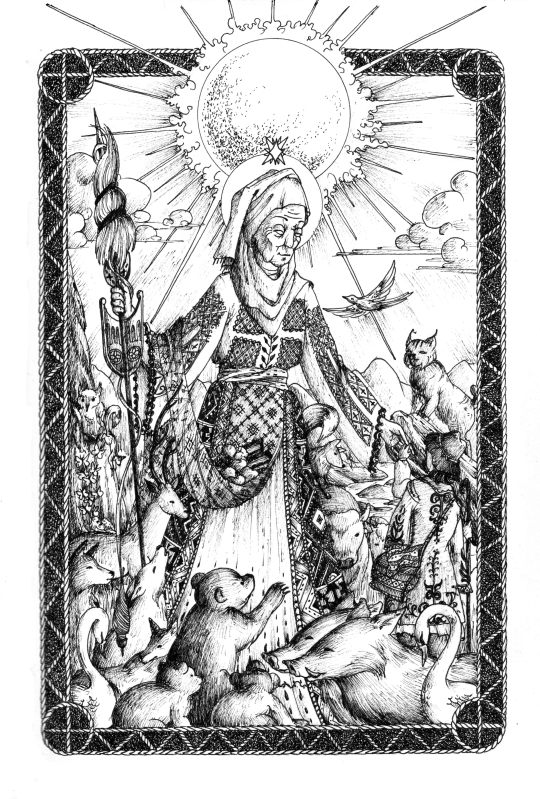
Sfânta Miercuri, generous widow, protector of animals and travellers and godmother to the sun.
Of Mirercuri(Wednesday) Romanian traditions tell us that she is a very old lady who became a widow very early in life and thus spent most of her time appart from human society, caring for the wilds and teaching animals how to survive. She is said to be guide to travellers especially if they are treading wild paths. She is one of the frequent presences in fairy tales, always in a helper role, calling on her animal companions to aid the hero and possesing a treasure trove of magical artefacts(golden apples, a distaff and spindle that spin gold on their own, brushes that when thrown over the shoulder turn into forests) that she is very generous with. Miercuri is also the day the Sun was born and it is said that no matter the weather he always shows his face for at least a second for his godmother.
#sfanta miercuri#miercuri#romanisme#romanian mythology#romanian folklore#myth#mythology#folklore#animals#sun#wild#traveller#pen and ink#illustration#drawing#fantasy#ink#art#artists on tumblr
159 notes
·
View notes
Text

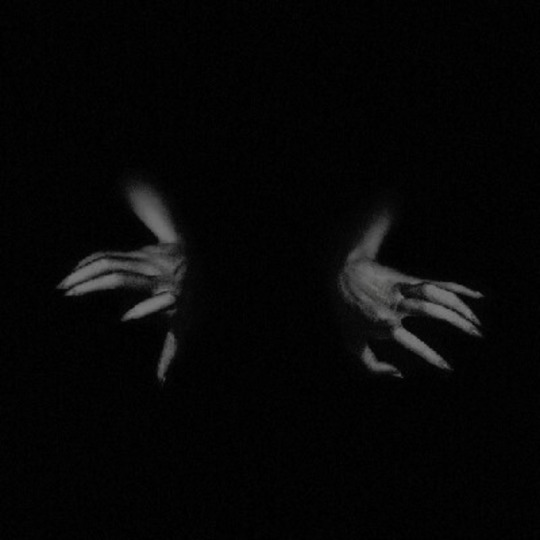

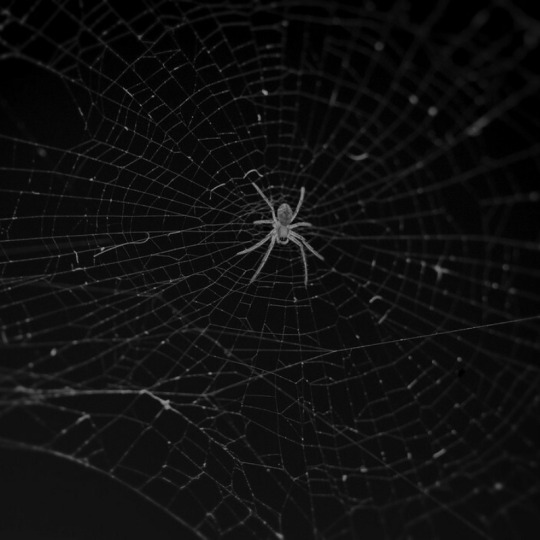
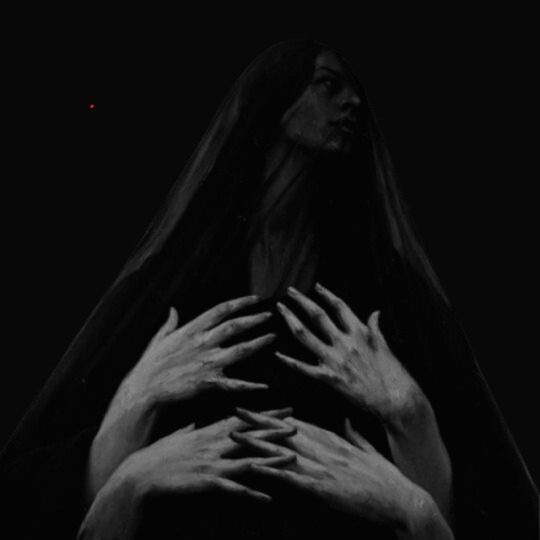




day 17 of horror mythology: samca
samca most commonly takes the appearance of a naked woman with disheveled hair growing down to her heels, with breasts that touch the ground, with small eyes that shine as brightly as the stars, with iron hands and long nails sharp as knitting needles or hooked as sickles and a tongue of fire. other forms samca can take are: a very large and fierce pig, a grinning dog showing awful teeth, a hairless cat with fiery, bulging eyes, a crow with bloody eyes, and a big black spider. she usually appears to children under the age of four, who are so frightened that they become sick immediately. the disease children develop after samca appears to them is called "the children's malice." this demon can also appear to women lying on their birth bed, and once visible she would touch the pregnant women as if kneading on them, scaring them so much that they either die instantly or remain crippled for life.
119 notes
·
View notes
Text
Romanian witches: Muma Padurii
(Note: I unfortunately cannot add the accents needed for the writing of those names since my keyboard is not equiped. So know that there are accents missing)
I originally made a post about one Romanian fairytale figure... which turned into a post about two fairytale figures... which became a post about three fairytale figures... So ultimately I decided to split this post into a whole series because it was getting too big. I want to explore with you three characters tied together in Romanian folklore and all present within Romanian fairytales, but each fascinating in their own right. And I want to begin with the first of these ladies... Muma Padurii.
Muma Padurii means "The Forest Mom", or "The Mother of the Forest" (Muma is an archaic form of "mom").
In fairytales, Muma Padurii is an antagonist. She is an embodiment of the wicked witch, or rather of the hag. She is a very old and very ugly woman (so ugly the expression "You look like Muma padurii" is an insult) who lives all alone in a little, dark and scary house in the depths of the woods. She is not a normal woman: she is a witch gifted with various supernatural powers (including shapeshifting), and she is also an ogress who loves to eat children. It is as a children-predator that she usually appears within Romanian fairytales, luring kids to her house to kill and cook them. One of the most famous Muma Padurii fairytales is the Romanian version of "Hansel and Gretel", which mostly differs by A) having the witch named B) the house not being made of candy and C) the genders are reversed (here it is the girl that is to be boiled alive into a soup, while it is the boy that pushes the hag into the oven).
But the thing with Muma Padurii is that, in a similar way to Frau Holle, she is an entity that was "split" between fairytales and legends. There is a Muma Padurii of folktales which is the evil hag I presented above, but there is also a Muma Padurii of beliefs and legends which is quite different and much more neutral.
This Muma Padurii is still an old, ugly, shapeshifting witch - but she is presented as amoral rather than wicked, with a personality mixing a fairy-like mischieviousness and just pure insanity. The name "Muma Padurii" is also very revealing... In the fairytales this name is used in the typical motif of the witch/hag as the "false mother" or "anti-mother", but in the Romanian mythology, this name indicates what Muma Padurii is. She is the Mother of the Forest, as in the spirit of the forest. Her main role, and the reason for her hostility towards humankind, is her function as the guardian of the woods. She still lives in a remote and hidden location - but it is not always a little cabin, it can just be a tree, and it is usually within a virgin-woodland at the heart of the forest, untouched by human hands. She still brews potions - but they are good potions, that she uses to heal injured animals and sick trees. For Muma Padurii always keeps the forest alive. She does attack humans - but only those that destroy the fauna and flora, or that trespass within forbidden areas where only wild things are supposed to be. This was why those that entered the woods were warned to not go too far and to respect what surrounded them: else Muma Padurii would at best scare them away, at worst drive them to insanity with her magic. As such, it was forbidden to pick up certain wild fruits and berries in the forest during certain times of the year - they were for the animals to replenish their strength, and Mama Padurii made sure this rule was followed. In the most extreme cases she would kill the trespassers and devour their corpses like a wild animal - a bogey-version of Muma Padurii that explains her role as a child-eating crone in fairytales...
Muma Padurii is present all across Romania, sometimes in local variations (Padureanca, Muma Huciului), and this explains why there are so many different incarnations of her. Sometimes she is an angry ghost of the woods, a vengeful spirit which can be heard crying among the trees for all the plants that mankind destroyed, and if a house built near the forest isn't carefully locked up at night, she will enter in them at midnight and kill all those inside... Other times she is depicted as a young and beautiful fairy of light, who will be kind and helpful to children but will trick adults into being lost, having their body paralyzed or dying in various ways. This specific idea of the "young faced Muma Padurii" is notably present in another folktale/fairytale, where it is said that the Muma Padurii is a witch that needs to eat human hearts to keep herself young and alive - as such she takes on the appearance of a beautiful woman to lure young men into the woods, but once they are isolated enough she turns into a giant monster and rips their hearts away.
Her link to the forest is highlighted by how she is often said to disguise herself as a tree, to be a part-tree woman, or a hag clothed in moss (she also can appear as a cow, a horse or an ox) ; her function as a "Romanian fairy" is also highlighted by how in various legends she either makes babies sick, or replaces them by changelings (and as such they were several folk-spells and rituals Romanian country-folks used to protect their babies from the Forest-Mom). But mostly Muma Padurii stays an embodiment of the woods in what they have of dangerous and scary. She can be kind and helpful - but only towards the "innocent", animals, plants and (sometimes) children. However she stays an ancient woman of the woods, the mistress of the wild animals, the embodiment of a state of non-civilizations, and as such she is the fright that drives one mad and the savage force that will kill and eat men. And even then, the fauna and flora itself is not always escaping her wrath - some records say that Mama Padurii knows the name of every tree of the forest, but that she can get angry at some and curse them to fall either by the woodsman's axe or by lightning.
The last interesting difference between the fairytale Muma and the legendary Muma is that, while the fairytale Muma is usually a lonely entity, in beliefs Muma Padurii was part of a large family. Sometimes Muma Padurii herself was multiplied into several "Muma" - there was notably a belief about many of them sometimes visiting the cabins of those that lived near the woods, asking to have their hair brushed and cleaned, with a comb and butter (which isn't an easy feat since she had her hair dirty, tangled in snake-like braids and so long it touches the floor). Anyone who agreed to the task and performed it well could receive a wish from the Mother of the Woods - but the rule was that they could only pronounce three words in total as long as she was here, if a fourth was pronounced, she would take your voice and leave you mute. Sometimes Muma Padurii was given a male counterpart of companion called "The Father of the Forests", or the "Woods Papa".
Muma Padurii was also said to have several sons, which were the spirits of the woods and/or of the night (going by names such as Decuseara, Zorila, Murgila, Mamornito or "Midnight"). She is also linked to a set of female forest spirits known as the Fata Padurii (Fata being of course linked to the "fairies", "fées", "fatum" - but here it is to be understood as "The Daughters of the Forest", "The Girls of the Woods, and fittingly they are said to be the daughters of Muma Padurii) ; and to an entity I personaly do not know much about, "Mosul Codruilui" (she is said to be her mother, and "Mosul" means "old woman")
Finally, there was a certain Christianization of the Muma (as some tales started saying her task as a guardian of the forest was given to her by God), and a modern attempt at explaining how she could be such an ambiguous entity, benevolent and malevolent at the same time: most modern storytellers highlight how protective she is of the fauna and flora, and how she was said to wail and cry for the destroyed wood, to explain her "transformation" as her becoming more and more bitter, and angrier and fuller of hate the more humans destroyed her domain, harmed her trees and wounded her "children". A true ecological fable.
Some people point out that Muma Padurii could be a "Romanian equivalent" of the Russian Baba-Yaga which is... not quite exact and not quite true. The two characters seem to derive from a same old "forest mother-goddess" but there are too many differences between Muma Padurii and Baba-Yaga for them to be consideed one and the same. There is however a interesting link between the two, which will be the subject of my next post... about Baba Cloantza.
#romanian folkore#romanian fairytales#romanian witches#romanian mythology#romania#muma padurii#forest goddess#hag#witches of folklore#legendary witches#forest-woman#wild woman#fairytale antagonist#forest mother
21 notes
·
View notes
Text
Dragobete
A romanian valentine's day.
The son of Baba Dochia (another folkloric being in our mythology), Dragobete is the patron of love and bringer of spring. His coming is awaited with flowers. His calling is to kiss the girls on this day, 24th of February, because the girl who isn't kissed shall remain single the whole year.
Dragobete, or Dragomir by his first name, is a young god, beautiful, a lover by nature, strong and charming, bringing joy in people's lives. Because no one knew who his father was, they assumed it was the Spirit of the Mountain.
When our loverboy was born, four ursitoare (fairies godmother) came to offer him the most generous of gifts. The first one, Spring, blessed him with love. Summer, the second one, gave him the sweetness of ripe fruits. The third one, Autumn, gave him a flute, to bring joy to those who hear him play, while Winter, the fourth fairy, offered him a white coat, adorned with diamonds and a red belt, sewn with pearls. The coat was designed to grow with the boy, never getting dirty, no matter how much he wore it. Because of these gifts, Dragobete managed to make every girl he wished, fall for him.
As he grew, he took the path of mountains, hearing the call of his parents, to learn all about plants and animals. Which is why, in the folk belief, Dragobete is also the protector of birds and herbs.
Another belief have him turned by his mother into a medicinal plant called Năvalnic. The plant is used in love spells and treating wounds.
to celebrate Dragobete, the girls go in forests and plains in search of the first flowers of spring and hang them on icons to be young and beautiful and keep away all jealousy and bad thoughts sent their way. dried flowers are thrown in a running water on Sânziene day, so all the evils will go away with them. if they found ripe berries, they'd take the flowers and make bouquetes that were put in their water, as they washed their hair while saying „Flori de fragă
Din luna lui Faur
La toată lumea să fiu dragă
Urâciunile să le desparți”. (Berry flowers of the month of February, make it so that everyone likes me, cast away all ugly thoughts and wills from me)
the boys would pick ghiocei (snowdrops) and bring them home, because an old saying goes "as many flowers in your house, as many chickens in your farm"
those who are single on Dragobete, or don't manage to kiss, or the very least touch, a person of romantic interest, are doomed to another year without finding their soulmate.
those who have a partner and spent even a second with them on this day, will be together the whole year.
if you dream of your crush the night of Dragobete, speak to them and their heart shall open for you.
anyone who sees a pupăză (hoopoe) on this day, will be lucky all year long and if you see a pair of birds, you'll always be loved (birds are known to chose a mate this time of year).
early in the morning, young women would also search for remaining snow, melt it and wash their hair and face with it, to have clean skin and healthy hair.
another belief says that if you go on a date on Dragobete and don't kiss, you and that person will break up
as a boy you have to drink a special tea, made with sour cherry brenches to have a chance at love the year that's to come.
if men are mean or fight with women on this day, their spring will be filled with bad luck and they'll have an awful year
everyone should be happy on 24th of February, to honor Dragobete and convince him to bring them a lover
in some places, girls would put busuioc (basil) under their pillows to dream the face of their soulmate
in other parts, girls would run, chased by boys. if a girl was caught and she liked the boy, they'd kiss as everyone watched, which symbolized their wedding in the fall.
and some other places sent their girls – who haven't eaten or washed that morning – to pick popelnic (a type of wood) and wash their hair with it, leaving behind as an offering to the god, bread with salt and eggs. in the meantime, the guys dance in horă (a type of dance where people hold each other in a circle and, well, dance) and pick ghiocei (snowdrop)
Dragobete is, as you might have noticed, quite a pretentious god. on top of it all, he doesn't like you killing or sacrificing animals on his day. nor does he want you to sow, wash anything, iron clothes or work the field. the only work he allows is a deep cleaning of the house
Happy Dragobete, love is in the air!
#romania#romanisme#romanian folklore#romanian culture#romanian mythology#dragobete#romanian legends#folk tales#mythology#cultures around the world#myths#folklore
19 notes
·
View notes
Text
The Wild Hunt — A Vampire Hunter D Fanfic (pt-br below 🇧🇷)

Hello, lovelies!
So, finally, I'm publishing the fanfic that I'm working on since January beginning. For now, it's available in Portuguese on Wattpad and AO3 [Update Feb 3rd: now it's available in English, just scroll a bit!]. As I said before, English isn't my first language and I'm trying to translate by myself. I'm using Reverso, Duolingo, Linguee, and my three ADHD neurons. Gods help me.
English Version:
The Wild Hunt (AO3)
The Wild Hunt (Wattpad)
Olá, pessoas queridas!
Comecei a postar a fanfic de VHD que estou trabalhando desde o início de janeiro. Será um capítulo semanal e já tem conteúdo no Wattpad e AO3 (os links estão logo abaixo). Se vocês tiverem interesse, eu ficaria muito feliz com a leitura e feedback. É difícil encontrar material sobre o anime/mangá em português. Então cá estamos nós.
Versões em Português:
A Caçada Selvagem (AO3)
A Caçada Selvagem (Wattpad)
#vampire hunter d#vampire hunter d fanfic#vhd#vhd fanfic#vampire hunter d bloodlust#ao3fic#wattpad#d x oc#d x original character#mitologia eslava#mitologia romena#slavic mythology#romanian mythology#cassandra constantinescu
13 notes
·
View notes
Photo
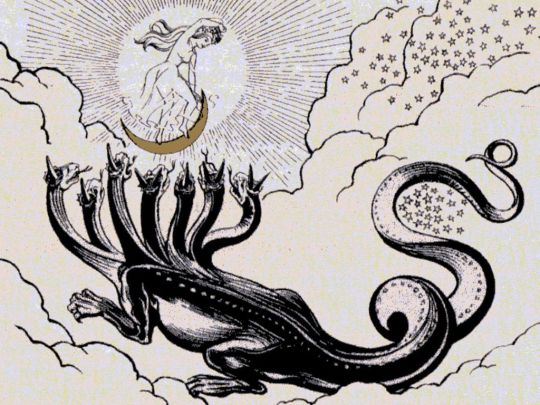
Balaur (pl. balauri) in Romanian folklore is a type of many-headed dragon or monstrous serpent, sometimes said to be equipped with wings. The number of heads is usually around three, but they can also have seven heads or even twelve heads according to some legends.
The balaur in folktale is typically evil, demanding or abducting young maidens or the princess, and defeated by the hero such as Saint George or the fair youth Făt-Frumos.
There is some lore in which the balaur is considered weather-making, and living in an airborne state, but these types of balaur are sometimes interchangeably called hala or ala, being confounded with the pan-Slavic air and water demon. The balaur (instead of the zmeu) is the vehicle of the weather-controlling Solomonari according to some sources.
There are also legends about the balaur in which they can produce precious stones from their saliva.
In the Romanian language, balauri are "monstrous serpents" or dragons. Alternatively, the word balaur can be used to describe any monster like creature. They are many-headed like the Greek hell-hound Cerberus or the hydraand are winged and golden, according to Lazăr Șăineanu.
As reported by journalist Eustace Clare Grenville Murray, in Romanian folklore the balaur or balaurul is a serpentine being who guards treasures and princesses, coming to blows against heroic Fêt-Frumos.
The balaur recurs in Romanian folktales as a ravenous dragon that preys upon maidens only to be defeated by the hero Făt-Frumos ("Handsome Lad"). The balaur may also be the abductor of the princess Ileana Cosânzeana, although according to Șăineanu the kidnapper of this princess is a zmeu in the form of giant with pebbly tails (or scaly tails) It is noted that the balaur and the zmeu are often confounded with each other.
According to folklorist Tudor Pamfile, there are three types of balauri in folk tradition: water-, land-, and air-dwelling. A type of balaur of the first type is a seven-headed monster that dwells in the well of a village, demanding maidens as sacrifice until defeated by either the hero named Busuioc or by Saint George.
22 notes
·
View notes
Text
Hello magical people!
This is a new blog where I will be posting content mainly regarding romanian mythology, language, literature, etc, but also general cool stuff I find about mythology, culture, anthropology, literature, onomatology (the study of personal names), short story prompts and ideas, yada yada. General whimsical stuff (as vague as that sounds)!
If you're interested in those sorts of subjects, I recommend you keep an eye out on what will be posted here. I will try my best to make posts in both Romanian and English, but I think I might just focus more on the English part, because there're very scarce resources and information about romanian *shenanigans* on the internet. I will make sure to provide sources for what I post If need be, and also: since a lot of these sources don't have English translation, I will most likely provide them so please keep that in mind ^_^
That said, I hope this will be a fun and helpful blog!
(tbh I made this so I could have a place to ramble about my favorite subjects like an unsupervised feral raccoon and just spit them out into the digital sea)
Pupici vrăjitorești!
#romania#romanian mythology#romanian literature#mythology and folklore#mythology#folklore#magical school#fairytale#anthropology#history#linguistics#literature#onomatology#onomastics#eastern europe#eastern european culture
1 note
·
View note
Text
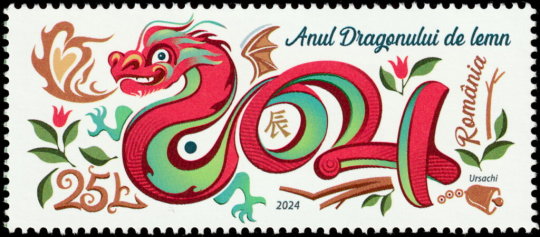
a 2024 Romanian stamp released for the Lunar New Year
[ID: a rectangular postage stamp with a highly stylized illustration of a red and green dragon. the dragon breathes fire and loops around itself, appearing to write out "2024" with its body. "Anul Dragonului de lemn" is written next to the dragon. the face value of this stamp is 25 Romanian leu. end ID]
#snail mail#stamps#postal#postage#animals#mythology#dragons#lunar new year#mod fave#request fill#romanian
235 notes
·
View notes
Text

Michel Simonidy (Romanian, 1870–1933) - The Night of Wicked Fairies
183 notes
·
View notes
Text

Sfânta Duminică, great lady of the week, mother of the winds and protector of mankind.
In Romanian mythology the days of the week are personified as 7 holy sisters as old as time itself. Highest among these sisters is Duminică (aka Sunday), a kind old lady who seeks to ease humanity's burdens and is a fixure of Romaninan tales. She is honored on her holy day with rest and merriment. It is said that any work done on Sunday gets branded into the holy lady’s flesh, which her 12 sons, the winds, can’t suffer and though they deeply love mankind, they will seek vengence for ther injured mother. These 12 good winds wander the world, observing and helping people wherever they go, until they too feel the need to rest. Then they return to their mother’s home, beyond the primordial waters of the river Sâmbăta, to bring her word of everything that happened in the world. There Duminică lives with her two loyal guardians, a she-dog with iron fangs and a he-dog named ‘light-as-the-wind-heavy-as-the-earth’. On Sunday after church service she visits every home in the world to gift people luck and good health, staying longest where her sons told her the people are struggling; but if she heard that somone has not been kind over the week she will peek in for just a second to take back the blessings that they've been missusing.
#romanisme#sfanta duminica#duminica#myth#mythology#romanian mythology#winds#dogs#week days#mother#sons#pen and ink#illustration#art#artists on tumblr
68 notes
·
View notes
Text

Laszlo Mathe, Dead Icarus, 2016, Oil on Canvas
#art#contemporary art#artist#contemporary artist#painting#oil painting#painter#romanian artist#romanian art#Laszlo mathe#oil on canvas#expressionism#greek mythology
33 notes
·
View notes
Text
Romanian witches: Baba Dochia
Originally I wanted to talk about only one "Romanian hag" from the world of fairytales, but from this one entity I ended up talking about Muma Padurii and Baba Cloantza and many more... Because there is never just one "baba" or one "muma" in Romania. There is a whole series of malevolent hags and magical old women which all embody in one way or another the benevolent, malevolent, or neutral aspects of the archetypal Romanian witch.
I will mention that Wikipedia lists the Muma Padurii/Baba Cloantza in her wicked form as one of the three recurring fairytale villains in Romanian fairytales, alongside the "balaur" (the "dragon", a winged multi-headed evil snake that comes in three variations 1) air-dragon that causes/lives in storms 2) earth-dragon living in chasms and pits and associated with gems 3) water-dragon, usually killed by the saint - see the legend of saint Georges) and the "Zmeu" (Zmei in plural, the Romanian variation of the Slavic creature of the same name, usually a giant sorcerer but which sometimes appear as a dragon)
But now I finally reach the witch I originally wanted to talk about. Baba Dochia. I learned at first about her when looking at an article which covered the Romanian translations of the brothers Grimm "Frau Holle", and this article evoked how in Romanian translations, often the legendary character of Frau Holle was replaced by a Romanian folkloric being: Baba Dochia (which the article did compare to the Baba Cloantza as an aspect of the "fairytale wicked witch"). With the bonus that the Baba Dochia is closely linked to the weather and to seasonal changes, which explains why she can fit the role of Frau Holle.
Here is what the article had to say about the Baba Dochia.
She is one of the many supernatural "babas" of Romanian legends (remember, "baba" simply means "old woman", the same way the German "Frau" means "lady" or "miss"). Baba Dochia ha, like Frau Holle a weather role - Baba Dochia is a manifestation of the cold weather and the winter season. Or, to be more precise, Baba Dochia is only a manifestation of the end of winter. The whole thing of Baba Dochia is that her "weather role" takes places during the beginning of March, a set of nine days that are typically called the "babele" (plural of Baba). This era marks the end of winter and the beginning of spring - a shift of seasons usually symbolized as a fight between two entities. Baba Dochia is supposed to wear nine "cojoace" (coats made of sheep's skin), representing how cold the weather is. During these nine days, when the weather is violent, unpredictable and constantly-shifting, Baba Dochia will remove each of her coats, one per day - and the more coats the take off, the hotter the air becomes and the more snow melts. In fairytales, this "seasonal battle" usually has the spring season symbolized by the "prince Charming" figure.
This is the case of a specific Romanian fairytale that is an equivalent of the Grimm's "The three little men in the woods". In this fairytale the Baba Dochia is a wicked stepmother that sends her martyrized stepdaughter to a frozen stream, to wash black wool until it becomes white. The stepdaughter encounters a beautiful young man named Martisor (I am not adding the accents here because my keyboard is not equiped for it) who embodies spring: not only does he help the girl, he also gives her flowers (we are in winter). When the stepdaughter returns she manages to get her accused of cheating on her husband (because after all you know, she accepted the flowers of a handsome stranger in the woods... It can look bad in an old countryside society) ; but these flowers will cause Dochia's downfall. She believes these flowers mean spring is here (when in fact it is still winter), as such she goes to the mountain with her sheep as she does every spring... but she just ends up frozen to death there, and all her sheep with her. This folktale is tied to the rocky landscape of several mountains - a type of mineral manifestation called "Babele" and which is supposed to be Baba Dochia and her sheep, petrified into stone.
Baba Dochia also appeared in the works of Mihail Sadoveanu, but this author decided to reinvent the character as a less wicked and more tragic character. In his own take on the story of Martisor, Dochia isn't the wickedness of a cruel season that needs to end ; but rather she suffers from the deep gap between the human world and the "otherworld". Otherworld that Baba Dochia represents: she is a witch-like old woman with obscure powers and a shadowy domain, living all alone in a little cabin at the top of the mountain, isolated from all civilization. One day, she adopts a young orphan girl and she raises her with love - but away from all other human presence. The young girl, who is a plain human unlike the otherwordly Baba Dochia, cannot resist her roots, and demands to be allowed to return into humans, in the light-filled world of the valley. Baba Dochia agrees to let her go there to see the humans - but in the valley, the girl falls in love with the titular Martisor and forgets to return to her adoptive mother. The old woman, alone and heartbroken, ends up freezing to death in the coldness of her little dark cabin.
This was all I could get from the article. To this I will add info from a little brief Internet research:
An alternate name of Baba Dochia in Bulgaria and Macedonia is Baba Marta, in reference to the spring celebrations of the first of March, Martenitsi, Bulgarian name of the Romanian Martisoare, from which the "prince" Martisor gets his name. Baba Dochia can also be found under this name in Moldavia on top of Romania. In English a translation is "Old Dokia".
A variation of the "babele" name described above: the fifteen first days of March can be called the "zilele babei" (the days of the old woman) (babei/baba refering to the old woman, the herb-healer and the female witch)
There are actually many versions of the fairytale I described above:
First version: Baba Dochia had a son, Dragobete in Romanian, Dragomir in Bulgarian, who married a young girl against his mother's will. Dochia abuses her daughter-in-law and at the end of February sends her to fetch berries in the woods. She is helped by an old man, who is actually God in disguise and produces the berries by a miracle. When Baba Dochia/Marta sees the berries, she believes spring is here, puts on twelve sheep-skins as coats and goes to the mountain with her son and sheep. But due to the rain her coats get soaked and heavy - so she removes them, but the frost suddenly arrives and freezes her to death, with her ship, and her son who was playing the flute.
Second variation: Pretty similar to the first, with a few details changed. There are only nine coats instead of twelve, and the Baba removes them due to the hot weather before the frost suddenly arrives. Her son doesn't go with her to the mountain. The girl isn't elped by God but by the Virgin Mary or a female saint. The girl is precisely asked to go fetch strawberries. And here the Baba and her sheep don't just freeze to death, they are petrified into the "babele" stones found in the mountains.
Third version: The baba sends her daughter-in-law to the river in winter to clean a very dirty coat until it gets white and shining, but the girl fails to do so and cries. A mysterious man arrives and gives her a snowdrop flower which makes the coat white by magic. When the girl returns with the white coat and the flower in her hair, baba Dochia believes spring is here - and she ends up like in the previous tales, frozen/petrified on the mountain.
Fourth version: Again, Dragobete marries a woman against his mother's will, so the baba Dochia abuses her, and notably sends her wash black wool in a stream until it becomes white (an impossible task). The baba specifically forbids her from returning until the wool is white, and since the girl can only freeze her hands in the cold water she cries about losing her husband (that she loves very much). Jesus then appears and offers her a red flower which makes the wool white. When the girl returns Baba Dochia believes springtime came since a man could pick up a flower - and you know the rest, she goes to the mountain with her nine coats, due to the weather she drops them one by one, and when she gets rid of the last everything suddenly turns cold and she freezes to death. (There's a fifth version which is just this story but with twelve coats instead of nine)
Outside of pure fairytales, if we go more into the folklore and myths, scholars debate the possible origins of the Baba Dochia/Baba Marta. Some believe she might be a character born of the old name of Dacia (Dakia in Latin and medieval Greek, close to "Dochia/Dokia"). Others believe she might have evolved from a Byzantine celebration Eudoxia/Eudokia's martyr on the 1st of March. A third theory is that she is the leftover of an ancient Thracian goddess common to the Romanian and Bulgarian territories, a deity of agriculture, fertility, renewal... But all in all the Baba Dochia/Marta was seen as a weather spirit with a quickly-changing mind and unstable temper, and as a result needed to be appeased with offerings. Only by these gifts will she make sure winter doesn't last too long and spring returns (while in fairytales it turned into the Dochia's death causing the triumph of spring). A folkloric ritual consists of leaving the offerings by fruit-trees or under rocks, and if they are left under rocks, people then look which kind of insect live or takes refuge there. Depending on whether it is a millipede, a spider, a cockroach or any other thing, it will form an omen about how the year to come will unfold, turning the Dochia offering into a divination ritual.
But as I said before, the baba Dochia was mostly seen as a negative entity - it was said she was a spirit of the bad weather who during the nine "babele" (the nine first days of March during which she removes her nine coats) brought snowstorms and cold winds. Another divination ritual had a woman pick up randomly one of the nine babele-days: if the day turns out to be good weather, they are promised to stay fair and nice in their old days ; if the day has bad weather, it means they will age into a bitter hag. There's a lot of proverbs and sayings tied to the weather and Dochia - which makes her similar to the German Frau Holle. Of course when people say "Baba Dochia removes one of her coats", it means the weather is very warm ; but when it snows people also say "Baba Dochia is shaking her coat".
The Baba Dochia also appears in a little story that is told all the way across Europe (I know this because just a few days ago I read a variation of it among fairytales of Bretagne). The story always goes the same: there is an arrogant or wicked old woman/shepherdess who for a reason or another mocks or threatens the month of March (here a sentient entity), who in revenge steals some days from February to come earlier punish the old lady. In Romanian this old lady is Baba Dochia.
There is also a very WEIRD pseudo-historical legend which tries to explain Baba Dochia as having been a person from the Antique history of the land... According to this tale, Dochia was related to the last Dacian king, Decebalus (she was his sister for some, his daughter for others). When the Roman emperor Trajan conquered the Dacians, Dochia fled into the Carpathian mountains because Trajan wanted to marry her. She disguised herself as a shepherd, and all her servants and followers disguised themselves as sheep. But Trajan kept pursuing her and sending his forces after her, so in despair she prayed to the Dacian god Zalmoxis, who turned her and her fake-sheep into the Babele stones we can still see today. Quite a strange story, heh?
There's also a Christianized, benevolent version of the Baba Dochia - because of course, Christianity is VERY strong in Romania and gets its hands onto every folkloric character it can (this is why in the Baba Dochia fairytales the Martisor-Prince Spring figure gets so often replaced by Jesus). In this sanitized, Christianized version, baba Dochia was a pious old woman whose prayers for winter to end brought spring... Quite a far move from the wicked stepmother.
As a last note: Baba Dochia's son, Dragobete, also plays a part in the "weather symbolism/calendar meaning" of the fairytale. Because while Martisor is the beginning of spring and Baba Dochia the end of winter, Dragobete is actually an old Romanian god of love (often called the Romanian Eros/Cupid) who is celebrated during the "Dragobetele" celebrations on the 14th of February... The Romanian Saint Valentine's day. Dragobete was called in old pagan traditions "he who bets on love" and "the godfather of animals", because he protected and blessed all couples upon his day - as such, you had a sort of human "Saint Valentine" celebration on his feast-day, but you also had an homage to what was believed to be the "engagement of birds". There's a whole set of traditions and legends surrounding this which I will not expand upon here, but it makes sense than that this spirit of the love-day of February is symbolized as the loving husband of the heroine and the son of the hag of the end of February...
#romanian witches#romanian folklore#romanian fairytales#baba dochia#frau holle#fairytale villains#romanian mythology
17 notes
·
View notes
Text
instagram
this person on insta is such an amazing source of inforrmation about romanian culture and folklore
2 notes
·
View notes
Text

Monstober Day 12: The Strigoi from Romanian folklore, a likely origin of the European vampire. The original story talks about troubled spirits that rise from the grave. I based my version off of various depictions of the creature from movies and various other depictions, giving it both vampire fangs and vampire bat incisors and a starved skinny body. My brushpen started getting really leaky so I ended up smearing the drawing in several spots. Pentel brushpen, Prismacolor fine-line marker, Bombay Black ink with brush, and red Daiso brushpen on Canson mixed media.
#Monstober#Monstober 2023#MonstoberDay12#Strigoi#Romanian folklore#vampire#art#my art#October drawings#drawing#mythology#monster#creature#evil spirit#pen and ink#horror#grave#October drawings 2023
6 notes
·
View notes
Text

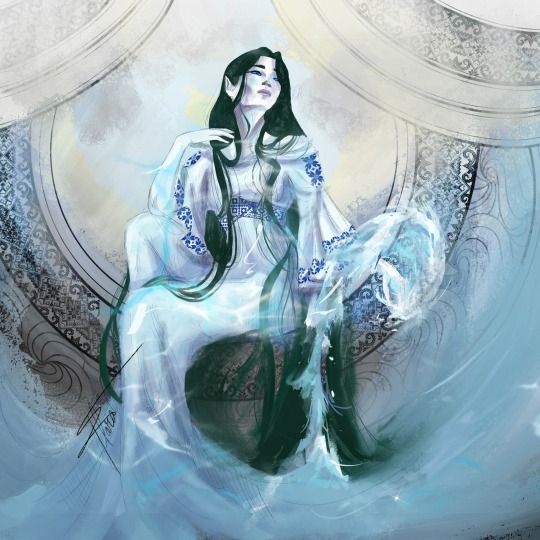
Ştima Apei- Romanian Water Fairy
#romanian myth#romanianmytholgicalcrearure#mythology#romanian#romanian folklore#character art#art#procreate#fantasy#digital art#character concept#character design#digitalart#water fairy#fairy#fantasyart#stima apei#ştima apei#stima apelor#ştima apelor
6 notes
·
View notes
Text
Are you more,
A: a deer standing in a field
B: a vampire standing under an umbrella
C: hatsune Miku
D: Doug
#soup slayer#wizardposting#help#deer-standing-in-a-field#Doug#miku#hatsune miku#mythology#like-Adam-Sandler-vampire#not the Romanian ones#okay
2 notes
·
View notes